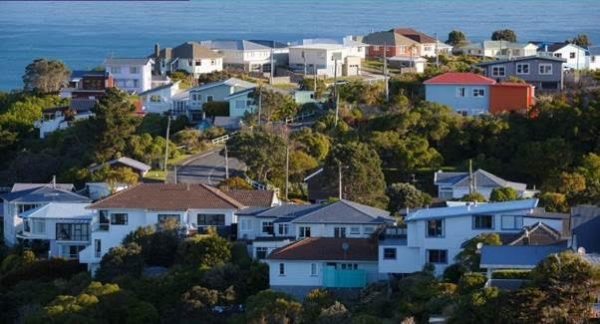
THE FULL MAGNITUDE of the housing crisis confronting the new government stands revealed in its “Stocktake of New Zealand’s Housing”. Released this morning, the document paints a far worse picture of the situation than even the parties now in government presented to voters from the opposition benches.
In the words of the three authors of the stocktake, Alan Johnson of the Salvation Army, Otago Public Health Professor Philippa Howden-Chapman and economist Shamubeel Eaqub:
“The past 25 years have seen the gradual demise of the so-called Kiwi Dream – a place where home ownership and the economic independence which this offers, was within reach of most working families. Home ownership rates have fallen to a 60-year low and could fall further. These falls have been alongside rapid house price inflation in many parts of New Zealand and, with this, deteriorating affordability. We are quickly becoming a society divided by the ownership of housing and its related wealth and recent housing and tax policy settings appear to have exacerbated this division.”
The policies advanced by the Labour-NZF-Green government in response to New Zealand’s housing crisis – most particularly Labour’s KiwiBuild initiative – no longer impress informed observers as either bold or comprehensive enough to bring about a speedy resolution of the crisis. On the contrary, they seem doomed to fail: there being neither the material, nor the human, resources required to make them succeed.
One has only to look back at the first great wave of state-initiated and funded house construction to appreciate the full scale of the difficulties confronting the new government.
Between 1936 and 1949 the first Labour government was responsible for the construction of 30,000 state houses. In other words, over a period of 13 years, the Department of Housing Construction and its private sector contractors were able to build fewer than a third of the number of dwellings which the present government has promised to build in ten!
What’s more, those 30,000 state houses were built at a time when the New Zealand economy was awash with unemployed labour and underutilised resources impatient to be set to work. Labour’s state housing programme was the New Zealand equivalent of US President Franklin Roosevelt’s “New Deal”: a massive public works programme designed to both enhance the nation’s quality of life and provide steady and well-paid employment for its people.
One of the ways the First Labour Government accomplished these goals was by mandating the use of local materials in state house construction. This decision gave an immediate and massive boost to all those businesses ancillary to the construction industry. To help the private sector keep pace with the state-induced demand, the Department of Housing Construction established two publicly-owned factories dedicated to producing the standardised joinery used in state house interiors.
The present government’s chief promoter of the CPTPP, David Parker, might pause to consider that such a policy of buying and using only Kiwi-made and sourced materials is expressly forbidden in practically all of the free-trade agreements New Zealand has signed since 1984 – including the CPTPP.
The state housing programme of 1936-1949 involved an unprecedented mobilisation of New Zealand’s human and material resources to construct a total of 30,000 dwellings. Even allowing for the fact that New Zealand’s population has more than doubled in size, how likely is it that Labour’s Phil Twyford is going to out-build Jack Lee’s Department of Housing Construction by a factor of 3 – in just 10 years?
Is it even remotely feasible that: from a tight labour market already suffering serious skill shortages; and from a construction sector already running at full-tilt; this government will be able to elicit an average of 10,000 additional houses per year?
Because, just to be clear, that total of 30,000 state houses constructed between 1936 and 1949 was over-and-above the normal total of dwellings commissioned and constructed by and for private companies and individuals. It is not yet clear whether Twyford’s promise of 100,000 “affordable homes” between 2017 and 2027 is on-top-of, or included-in, the output of private house construction.
It is important to remind ourselves at this point that Twyford’s “affordable” KiwiBuild homes are expected to sell for between $500,000 and $600,000 – a price completely beyond the reach of the tens-of-thousands of New Zealanders who possess neither a home of their own, nor a secure tenancy in somebody else’s.
For these: the working-poor on rock-bottom wages; Kiwis struggling to survive on a benefit; and, increasingly, for pensioners without a freehold home of their own; the Labour-NZF-Green government is promising to build just 1,000 state houses a year.
With the findings from the Stocktake of New Zealand’s Housing in their hands. With their heads chock-full of data showing how desperate New Zealand’s housing situation has become, Mr Twyford and his colleagues are proposing to build 1,307 fewer state houses than Jack Lee and the First Labour Government managed to build in a little country laid flat by the greatest depression in human history – eighty years ago.






Comparison with great depression build is shocking especially when we may be going into “The Greater Depression”.
IRR should replace Accommodation Supplement.
There are too many people paying far too much % income in private housing.
And when will Phil start building houses? John A. Lee built 3200 in his first 6 months for his Australian boss Mickey.
The Green Party’s policy on building new homes is the best and the only one that will make a dent. That is, the government getting directly involved in building thousands of new homes with a rent to buy option.
Well this is Twyfords big idea, he wants to build 5 Hobsonville developments for about $600k per unit and then we’ll have expensive affordable housing on demand and he’s got legislation in place to do that on its 1st reading. Just google ‘Twyford’ and ‘bill’ and you’ll see he’s trying to make what essentially is the iPhone of New Zealand housing market. So there has to be innovation in finance, workforce, PR and materials. But this is open source so to an extent Twyford is putting his ideas out there so people aren’t fighting over contracts. So these are ideas that Twyford starts off and is happy for others to pick up these ideas and develop them and build on them.
So Twyford is some one to keep an eye on but I wouldn’t necessarily invest in Twyford. I don’t really believe in investing in personalities, I do think there great visionaries out there and Elon Musk is one example but that’s a cult of personality that others attempt with half the work ethic. And also putting to much faith in one company I think Twyford and Musk are doing great things but they’re at the start of things and as we go along mistakes will be made along the way. Although they have big followings it may not be the best way ahead.
So what I’m thinking is a lateral way of thinking and so all these guys, what all these guys are building and for the most part the building material is mostly pine and the thing New Zealand’s residential construction sector needs is indeed pine planks, and then we need to go down the supply chain and say what is the component of the thing that we need to make its bigger brother.
So what is it that Twyford needs, and if his products are going to be successful and if demand for Twyfords products are taken up… And then Twyford may get damaged by competitors coming in and developing the technology, making it cheaper and better to produce pine like what happened with Apple killing off blackberry and Nokia, they’re still around but you get the picture. Companies that are on the vanguard of innovation run less risks than if there are barriers to entry that Twyford must smooth out first, so it doesn’t really pay to innovate and take on the costs while others can hang back and leach off of public funds and competition comes in and try’s to take every ones lunch.
But if all of these guys need a single commodity as a bases for what they are making and producing then let’s go after that one commodity or pine wood instead and that sort of makes sense to me.
Disabled/specific long term housing need first I hope!
Sounds like a great policy. Hope it gets through
“no longer impress informed observers”
You’re kidding right?
There was never any substance to their ‘policy’ – it was only ever an election slogan.
Oh and by the way, neither material nor human resource are constraints to a house building program. This is because we can both import complete houses and factory build them if we wish.
No, the real constraints to building are:
a) Land zoned and ready to build on
b) Local government resource consent processes
And the Building Regulations Act. Designed by Carter Holt Harvey. The sole reason for our overpriced dwellings. Speaking as someone who grew their own timber to build their home then found their superior grade timber was illegal because it wasn’t shitty tanalised pine from CHH and we didn’t intend to use their shitty overpriced imported products , all I can say is NZ deserves this disaster. When owner builders are deliberately regulated against you have to ask why our MP’s are so fucking stupid! And then do your own thing at the risk of having your superio quality home demolished by over zealous pig ignorant lawmakers.
You could add in the influx of qualified tradesmen from Europe and Britain after WWII who must have brought decent standards of work with them because those State houses are still standing and habitable, while the recent Kiwi tradies’ efforts gave us a billion dollar bill for leaky homes.
Demobilise MoBIE and restore a Department of Labour with a deeply qualified inspectorate to get our tradies into the 21st century – quality, skills, and speed.
Give NZQA the boot. Standards have not improved under their watch. Too much box ticking and not enough hands on depth and width for apprentices. Not to mention reliable work and pay. Those are needed too.
Push harder against the sexism. There are some fine women tradies. Open up the field – and put in the extra Port-a-loo, if that’s the big gripe. They’re known to be safer workers, as well as thorough.
And clean up the rorts alive and thriving in the cushy offices of local government. Building inspectors – pah! Seem to be too cozy with the local contractors. Get them sorted as part of this push for housing.
All Stoner Tywford really needs to do is …do what they did to the Maori land owners. Confiscate the whenua under the “I dont Give A Fuck Act!” Remmer golf course, it is a public park/reserve, Cornwall Park, Ellerslie race course and Churchill park which is already zoned for medium density housing. There, theres 70,000 houses in Auckland already!
Labour are going to be losers with there housing plan.
Since current living arrangements -suburbia, serviced by petroleum-powered vehicles and petroleum-dependent infrastructure- has no long-term future (and arguably has no medium term much beyond 2025) we should not be too concerned that the government is not wasting yet more resources on something with no future. After all, suburban housing -with all the roads and shopping malls and insustainable water and sewage systems- has been, quoting James Howard Kunstler, “the biggest misallocation of resources in human history.”
And the end of that grand misallocation of resources is now very much in sight.
‘The unfortunate part of the story is that the shale oil miracle only made this country more delusional at a moment in history when we really can’t afford to believe in fairy tales. The financial world is just now entering a long overdue crack-up due to the accumulating unreality induced by Federal Reserve interventions and machinations in markets. As it continues to get unglued — with rising interest rates especially — we will begin to see the collapse of the bonding and financing arrangements that the fundamentally unprofitable shale “miracle” has been based on. And then you will see the end of the shale “miracle.” It is likely to happen very quickly.’
http://kunstler.com/clusterfuck-nation/party-on-dudes/
Globally, well before 2030 we must expect:
1. The decline in conventional oil extraction to go beyond critical and take down the entire economic system.
2. The Ponzi financial system, based on ever-increasing debt levels and based on the conversion of fossil fuels into waste for its very existence, to collapse, taking with it most international trade and the supply of oil that has allowed NZ to participate in the cultural madness that cheap oil induced. (Indeed, there is much speculation the rigging that has held the system together since 2008 will not hold much longer, perhaps not even through 2018.)
3. Further worsening of the stability of climate, leading to much greater stress on food production and infrastructure, as sea levels rise and increasingly severe weather events take their toll.
However, since we live in a non-reality-based society (just as is the case throughout the rest of the western world) we can expect the government to promote idiotic policies that exacerbate every predicament we are faced with.
It’s not going to be fun when the total lack of appropriate planning that has characterised the past several decades is finally exposed in the biggest meltdown in history.
One persons housing shortage is another persons inflated asset price. Achieving a significant lift in government supplied housing is possible but an enormous undertaking – requiring a change in attitude towards the free market and significant tax increases to provide the funds and commitment needed.
I’ve been somewhat surprised by the new governments timidity – they are constrained either by the economic risk of increasing housing supply and lowering house prices or we are signed up to trade agreements that forbid direct government involvement in a sector where foreign investors have an interest.
With a 51% majority it may be the government does not feel it has a mandate for radical change in anything.
Perhaps most fundamentally there is the constraint of government revenue – the reduced government revenues from the 2008 tax cuts must be a primary factor. With a stronger mandate and sufficient revenues it would be possible to invest in apprenticeships and training as well as bringing in migrant workers. More government interference will also be needed to tackle the non- competitive problems in the building supply sector.
Comments are closed.